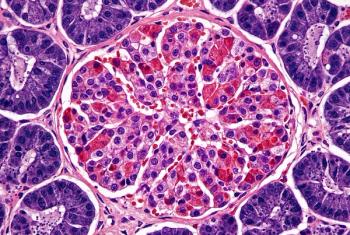
Survey: More providers embrace remote health monitoring
Population health initiatives are driving rapid adoption of mobile remote patient monitoring solutions, according to a new report.
Population health initiatives are driving rapid adoption of mobile remote patient monitoring solutions (RPM), according to a new report. The report, “Trends in Remote Patient Monitoring 2015,” from the Spyglass Consulting Group, shows that 66% of hospitals and health systems surveyed have deployed RPM solutions to support population health. These were used to manage value-based risk associated with supporting large patient populations with complex chronic conditions including congestive heart failure (CHF), COPD, diabetes, and hypertension.
Malkary“Providers are making significant investments in mobile remote patient monitoring solutions,” says Gregg Malkary, founder and managing director of the Spyglass Consulting Group, a market intelligence and strategy firm focused on mobile and wireless technologies within the healthcare industry.
When used within the context of a disease management and/or care coordination program, remote monitoring may help provider organizations achieve the Triple Aim of improving care quality and outcomes, controlling costs and utilization, and increasing patient satisfaction.
Survey findings
The survey found that 84% of providers surveyed who had deployed remote patient monitoring were using mobile devices, primarily tablets, to support chronically ill patients recently discharged from the hospital. The survey also found that:
• Providers are expressing strong interest in wearable technology.
• Most providers plan to evaluate wearable technologies, including smartwatches and activity trackers, that can be used to support chronically ill patients.
• Most providers (79%) are using analytics and decision support tools to turn raw patient data into actionable knowledge and insights to help manage and monitor patient health.
Malkary says that as accountable care organizations and other risk-bearing organizations migrate toward value-based reimbursement, providers are putting together population management programs which are initially targeted at chronically ill patients. “To track care quality and outcomes, especially outside the four walls of the hospital, requires patient-acquired data which can be derived from wireless sensors and subjective questioning of the patient’s condition," he says.
Trends to watch
Malkary says these up-and-coming trends within the healthcare industry appear align with the direction of remote monitoring solutions:
- Mobility. PEW research indicates that nearly 70% of U.S. adults own and use smartphones, including the elderly. “It makes sense that the solutions being deployed will leverage these technologies,” Malkary says.
- Wearables. Healthcare organizations around the country are experimenting to see how wearables could be used to support the chronically ill, Malkary says.
- Analytics. “This is top-of-mind for everyone,” Malkary says. “Opportunity for analytics is not so much for RPM, but to support and analyze large patient populations. RPM vital signs, wearables, implantables and ingestibles are data streams to analyze within these engines.”
- Engagement. Remote monitoring is really a feature of large patient engagement platform, Malkary says. “We need the appropriate tools to help patients evoke positive behavioral and life style changes,” he says. “This includes streaming educational content, using social media to connect with other individuals with similar conditions, and communicating with the care team.”
Recommendations for executives
- Conduct demonstration programs with chronically ill patients with specific conditions including CHF, COPD, diabetes, asthma and hypertension. Develop internal expertise or leverage a third party for first- and second-line clinical triage of patients.
- Integrate remote monitoring within your overall patient engagement strategy.
- Leverage mobile technologies so that you allow patients to use a single device to manage their day-to-day personal and professional lives.
- Integrate remote monitoring within existing clinical care processes and systems.
Tracey Walker is content manager for Managed Healthcare Executive.
Newsletter
Get the latest industry news, event updates, and more from Managed healthcare Executive.






















































